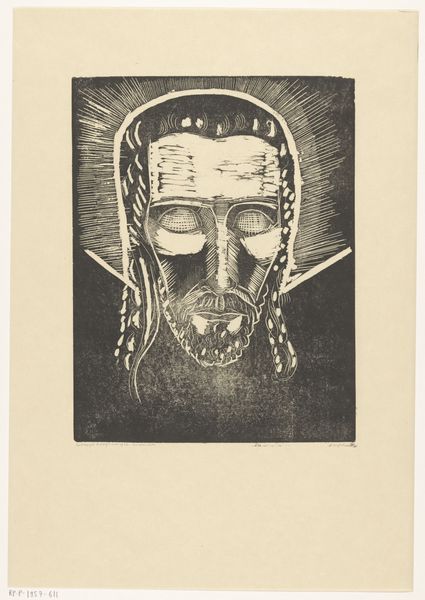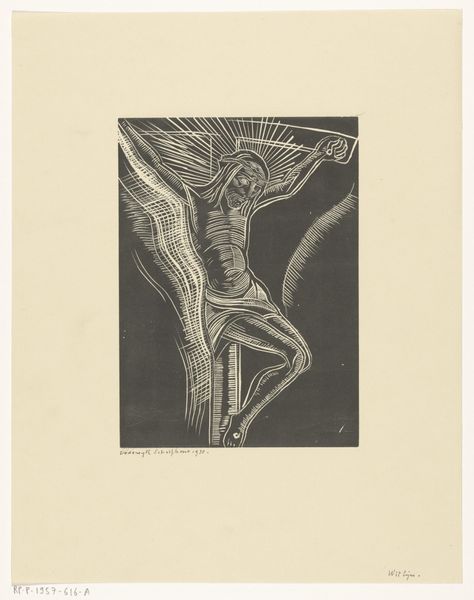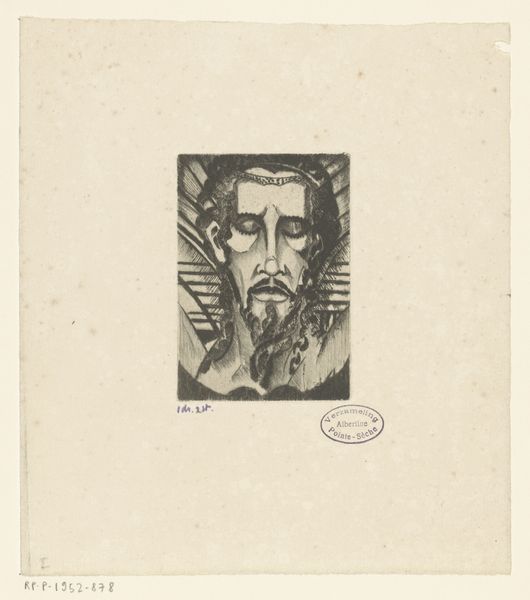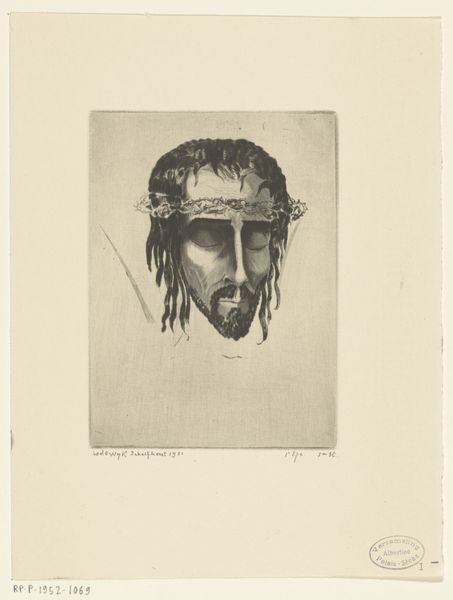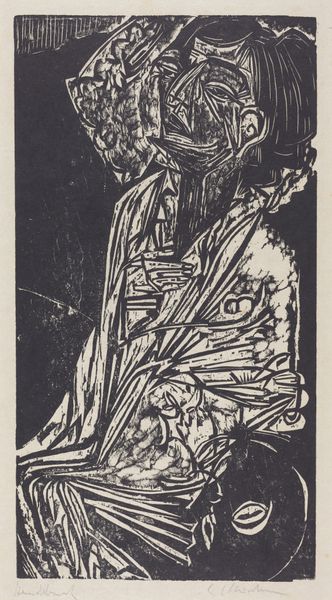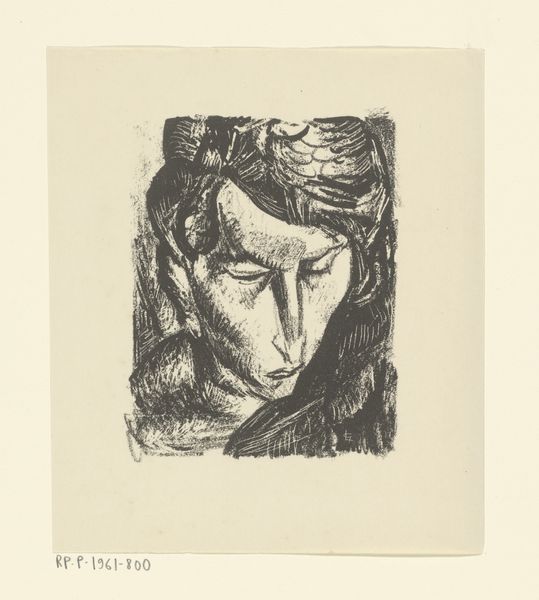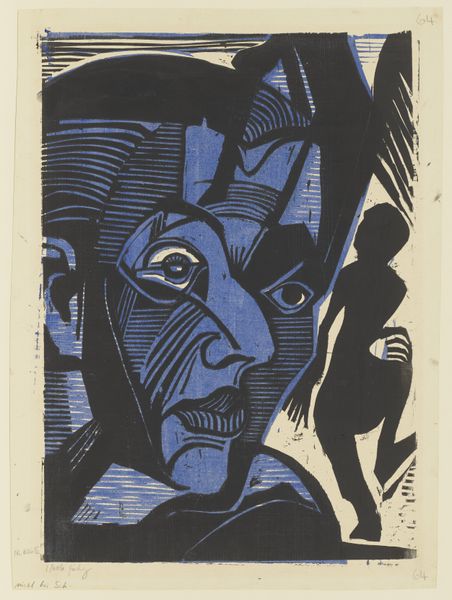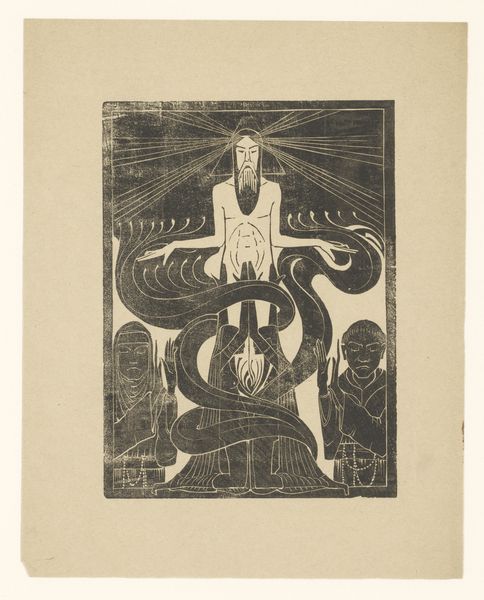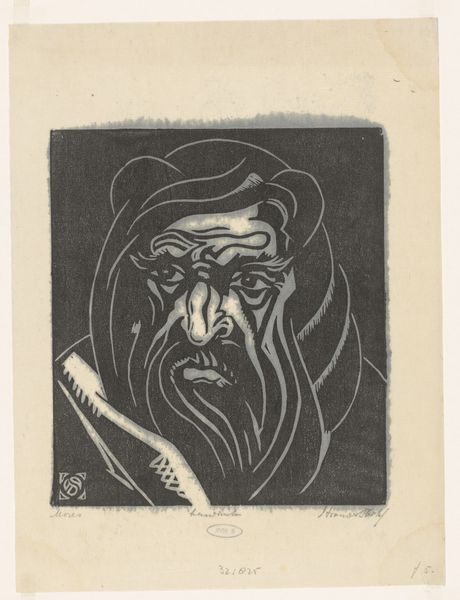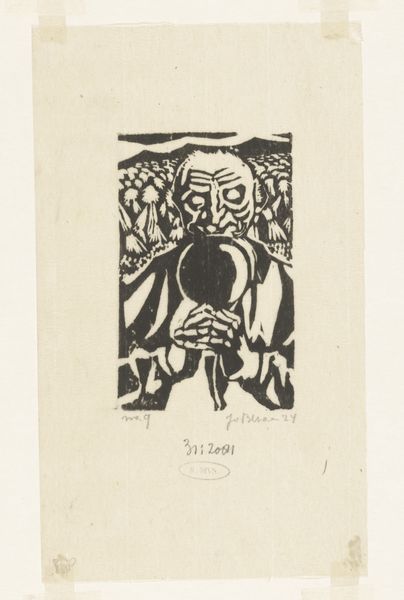
print, linocut
#
portrait
# print
#
linocut
#
figuration
#
linocut print
#
expressionism
Dimensions: height 150 mm, width 131 mm
Copyright: Rijks Museum: Open Domain
Curator: This is Jo Bezaan's "Christus" from 1920, a linocut print currently held at the Rijksmuseum. The stark contrast and heavy lines make it quite striking. What are your first impressions? Editor: It definitely has a powerful, almost mournful feel. The heavy use of black and white gives it an intense expressionistic quality. As a linocut print, how does the materiality inform our understanding of the work? Curator: A crucial point! The choice of linocut speaks volumes. It was a medium readily available, cheap, and easily accessible, moving away from the traditional, bourgeois media like oil painting. This accessibility democratizes the image, doesn't it? Who typically makes linocuts, and who are they made for? How does this relate to Bezaan's own social context and possibly her intended audience? Editor: So, it’s less about fine detail and more about impactful imagery for broader distribution, possibly reaching those outside of the traditional art world? That expressionistic element combined with the accessible medium gives the piece a potent, almost urgent, social voice. Curator: Exactly! And think about the labor involved – the cutting, the printing. Linocut, unlike engraving, requires a more physical, almost brutal engagement with the material. How does that labor inform the viewer’s experience of the work? What kind of statement might this image make regarding labor, suffering, and faith? Editor: It changes how I see the image completely! I was focusing on the religious aspect, but the materiality speaks to a wider commentary about production, access, and social statement through religious art, thank you for this insight. Curator: Precisely. Thinking about art through its materials and production process reveals a deeper social significance. This work, at its core, reflects its time, class issues and democratization of imagery through an accessible medium.
Comments
No comments
Be the first to comment and join the conversation on the ultimate creative platform.

